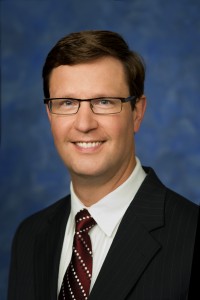Apr 9
2014
Today’s Healthcare Collaboration Technologies No Longer Bound by Time or Location

Guest post by Brent Lang, president and CEO of Vocera Communications.
There have been dramatic changes to the look and feel of healthcare communication and collaboration technologies over the past few years. The demands of healthcare reform have shaped new challenges not previously seen or imagined, and in turn have spawned the development of entirely new solutions to meet those needs.
As healthcare professionals discover new and broader uses for healthcare technology in patient care, one goal remains – driving efficiencies that bring the nurse back to the patient’s bedside, which in turn improves both the quality of care and patient experience. In doing so, technology solutions must also defy the four walls of the hospital to connect clinicians across the care continuum whether or not they are physically on site.
As healthcare communication technology has progressed, the topic of mobility has become hotter than ever. Today’s hospital workforce needs to be increasingly mobile and collaborative. This requires solutions that are no longer defined by time or location. Healthcare employees are constantly on the move, and must be able to securely connect from anywhere to answer questions and respond to emergencies. Naturally, communication systems that can keep up are in high-demand. When a clinician has the ability to instantly locate the resources and information he or she needs, while in transit, treatment delays and medical errors are prevented.
Most people are familiar with the traditional nurses’ station, located in a central area on the hospital floor where nurses and physicians can take calls, review files and answer questions. When a patient’s condition can change in minutes and even seconds, being able to reach the right physician or nurse immediately is vital.
Unfortunately, nurses often spend precious time running back and forth from the central nurses’ station waiting for a response from a physician – time that would be better spent at the patient’s bedside. Similarly, internal pagers are unreliable because they are troubled by “dead zones” within the facility, don’t provide closed-loop communication, and don’t integrate into existing clinical systems. Performing simple tasks, such as replacing an IV drip bag, can often take up to four pages or phone calls to get physician approval. These inefficiencies can affect care quality and patient experience.
As more hospitals have embraced mobile technology for clinicians, their overall workflow has evolved. When doctors and nurses have effective mobile communication tools at their fingertips, there is less need to search for people, sit on hold, or play “phone tag.” Mobile tools that allow clinicians to directly communicate with the exact contact they are trying to reach, reduces the need for intercom calls that are disruptive and may result in complaints from staff, patients and families. Additionally, many hospitals are now able to configure alerts from patient rooms so they are delivered only to the nurse responsible for that patient via a text message or voice alarm. When these alerts are sent directly to clinicians’ mobile devices, nurse managers are no longer tied up at central stations, trying to locate the correct contact. Instead, they have more flexibility to perform other functions in their units.
Today’s healthcare communication and collaboration solutions are no longer bound by the hospital’s walls. One example is the adoption of mobile applications that are sensitive to user communication preferences and can be utilized on any device. This seamless connectivity allows hospital staff to communicate whether they are inside or outside of the facility.
The healthcare industry will continue to see an increase in mobile solutions that streamline communication across the care continuum and allow clinicians to make decisions in a timely manner. With the right mobile solutions, healthcare workers will not only increase efficiency and care quality, but also create more patient-centered environments.